When Peter O'Malley Produced An Unforgettable Finish To Win The Scottish Open
Peter O’Malley produced one of the finest ever finishes in the 1992 Scottish Open

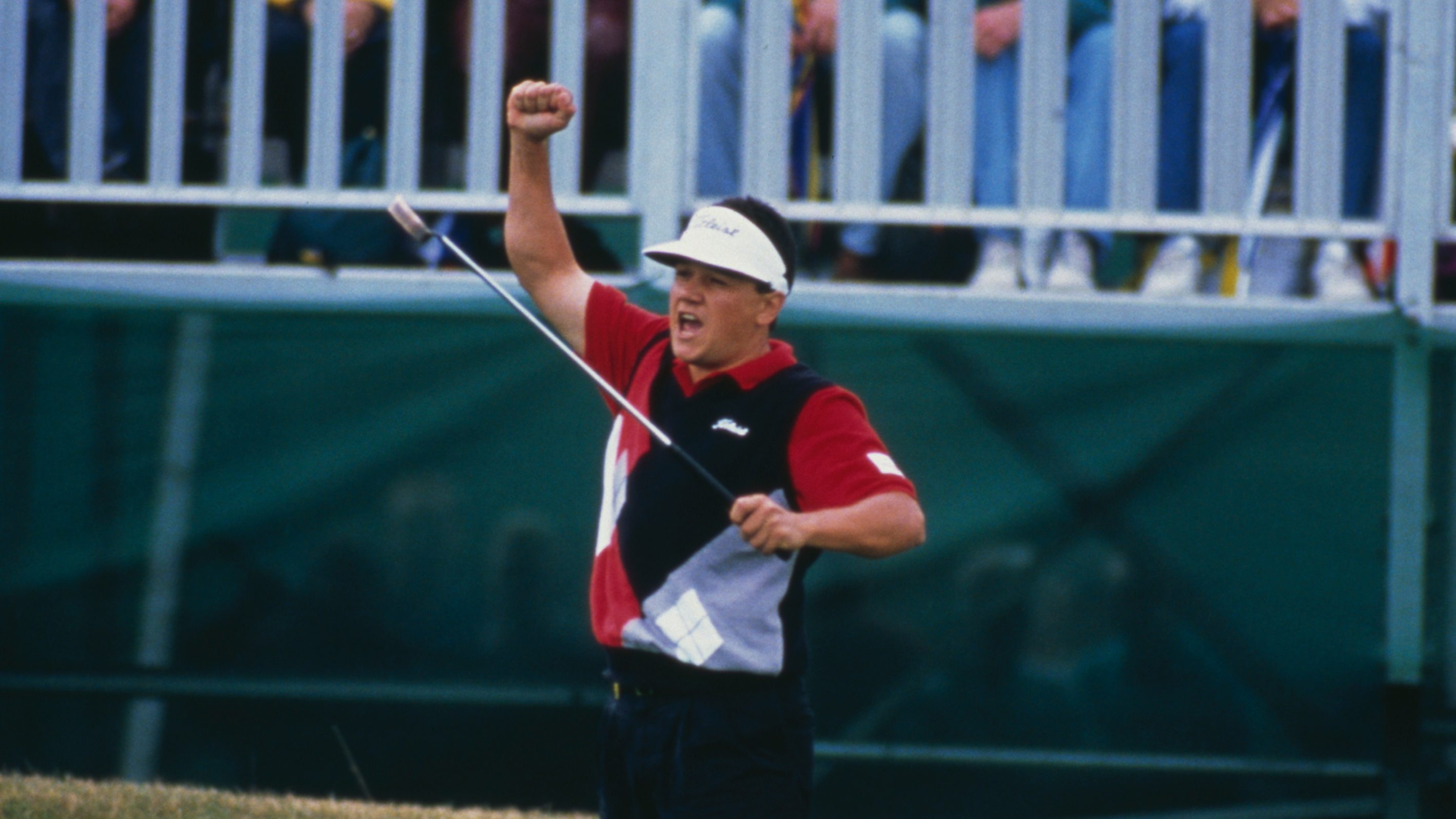
A fine selection of tournament favourites gathered to contest the 1992 Bells Scottish Open. With The Open Championship to be staged at Muirfield the following week, many of the European Tour’s best players, and a number of stars from the USA, travelled to Gleneagles to complete their final preparations for the year’s third Major.
The 1991 Masters champion, Ian Woosnam, was highly fancied. He’d won twice previously around the King’s Course at Gleneagles and he went into the event fresh off a victory in the Monte Carlo Open the previous week.
With four Majors under his belt at that point, World No.2 Nick Faldo was rightly expected to contend. He’d won the Irish Open in June and had notched seven further top tens on the 1992 European Tour.
Bernhard Langer was on good form, as was the consistent Zimbabwean (now Irishman) Mark McNulty, who had been runner-up at Gleneagles in both 1990 and ‘91.
Then there was home favourite Colin Montgomerie. He’d been third in the US Open at Pebble Beach in June and was viewed as one of the most promising players in world golf at the time. He was eager to perform in front of the Scottish crowd and to be the first home winner of the championship since it became a fixture on the European Tour.
From the USA, Ben Crenshaw was on the start list, together with the likes of Larry Mize, Tom Weiskopf and Rocco Mediate. With a field of such strength, it was set to be a thriller that would surely produce a great champion.
Journeyman pro
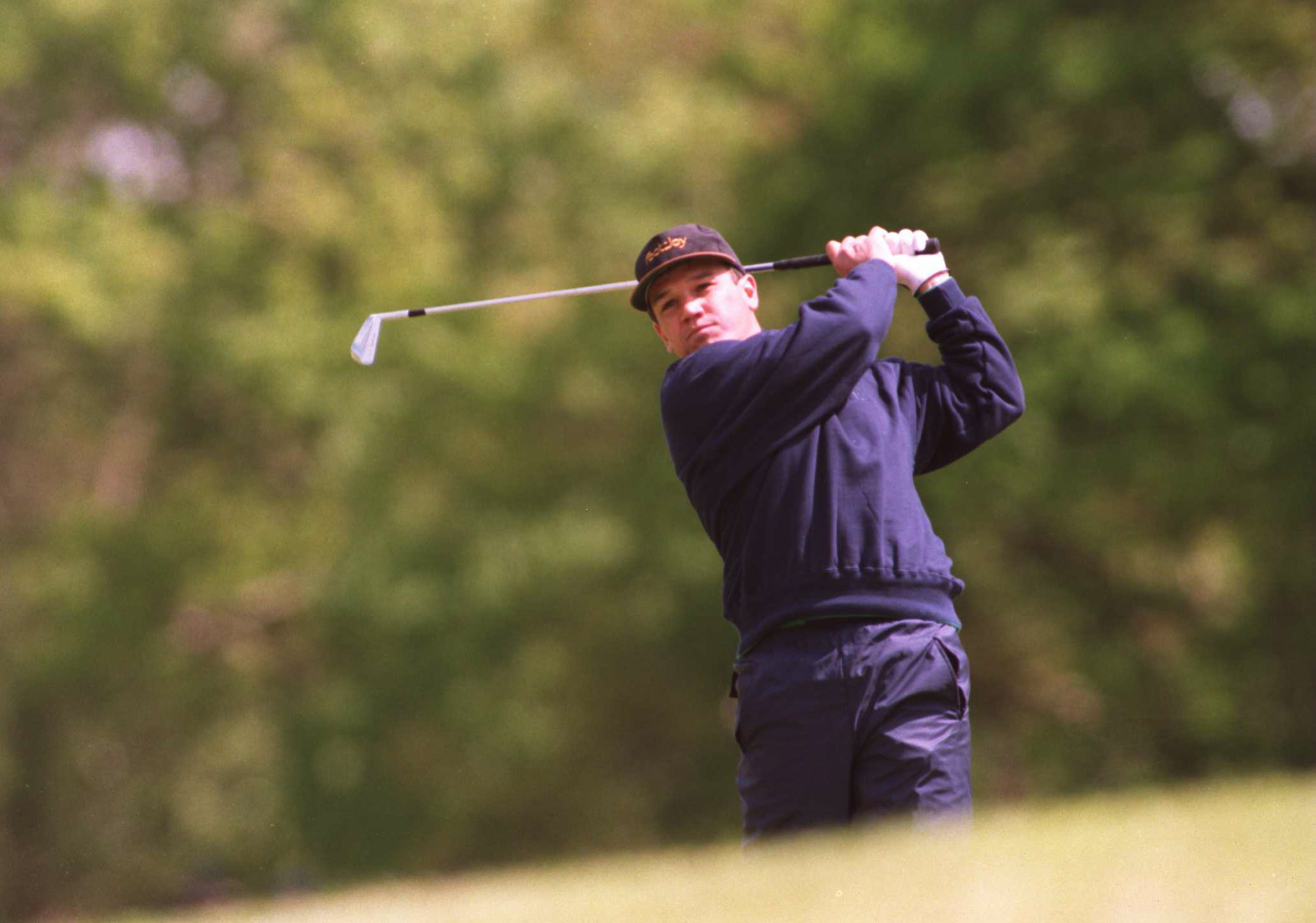
O'Malley
As the competition got underway one name nobody, save perhaps for his wife and caddie, was mentioning was that of Peter O’Malley. The likeable Australian had been on the European Tour since 1989 and had enjoyed moderate success with a handful of top-ten finishes, including a second place in his first-ever start on the circuit.
Subscribe to the Golf Monthly newsletter to stay up to date with all the latest tour news, equipment news, reviews, head-to-heads and buyer’s guides from our team of experienced experts.
The 27-year-old had finished 50th on the money list in both 1990 and 1991 and looked to be a steady ‘journeyman’. A former Australian junior champion, he had shown himself to be a powerful hitter and an excellent driver of the ball. But his putting was a little suspect and it was trouble with the flat-stick that had prevented ‘Pom’ from stepping up to the higher echelons of the game. Heading to Gleneagles, O’Malley had struggled on the 1992 European Tour. He hadn’t recorded a top ten and had missed the cut in his last start with something to spare – he’d finished 126th in the French Open with rounds of 81 and 72.
A 150-1 shot at the start of the tournament, Pom’s objective for Gleneagles was firstly to make the cut, and secondly to find some form ahead of Open Qualifying the following Monday at North Berwick. Although there were five qualifying spaces for Muirfield available at Gleneagles, O’Malley was so sure he would need to head for Monday qualifying that he’d arranged to check out of the Gleneagles hotel on the Sunday morning.
After the first round of the 1992 Bells Scottish Open, 1985 Masters champion Langer held the lead. He had stormed around the King’s Course in an eight-under-par 62 to be one ahead of Sweden’s Mats Lanner, and three clear of a group of six players including Montgomerie and O’Malley. It was a great start for the Australian, but, with no fewer than 77 players breaking 70 on day one, it was clear he would need to maintain the low scoring if he were to get any sort of meaningful result.
On day two, O’Malley faltered. Although he made it round in level-par 70, he tumbled down the board into a share of 21st place as the big names turned on the afterburners. Faldo rocketed into contention with a 62 while Monty followed his 65 with a 64 to lie third.
Chance of historic 59
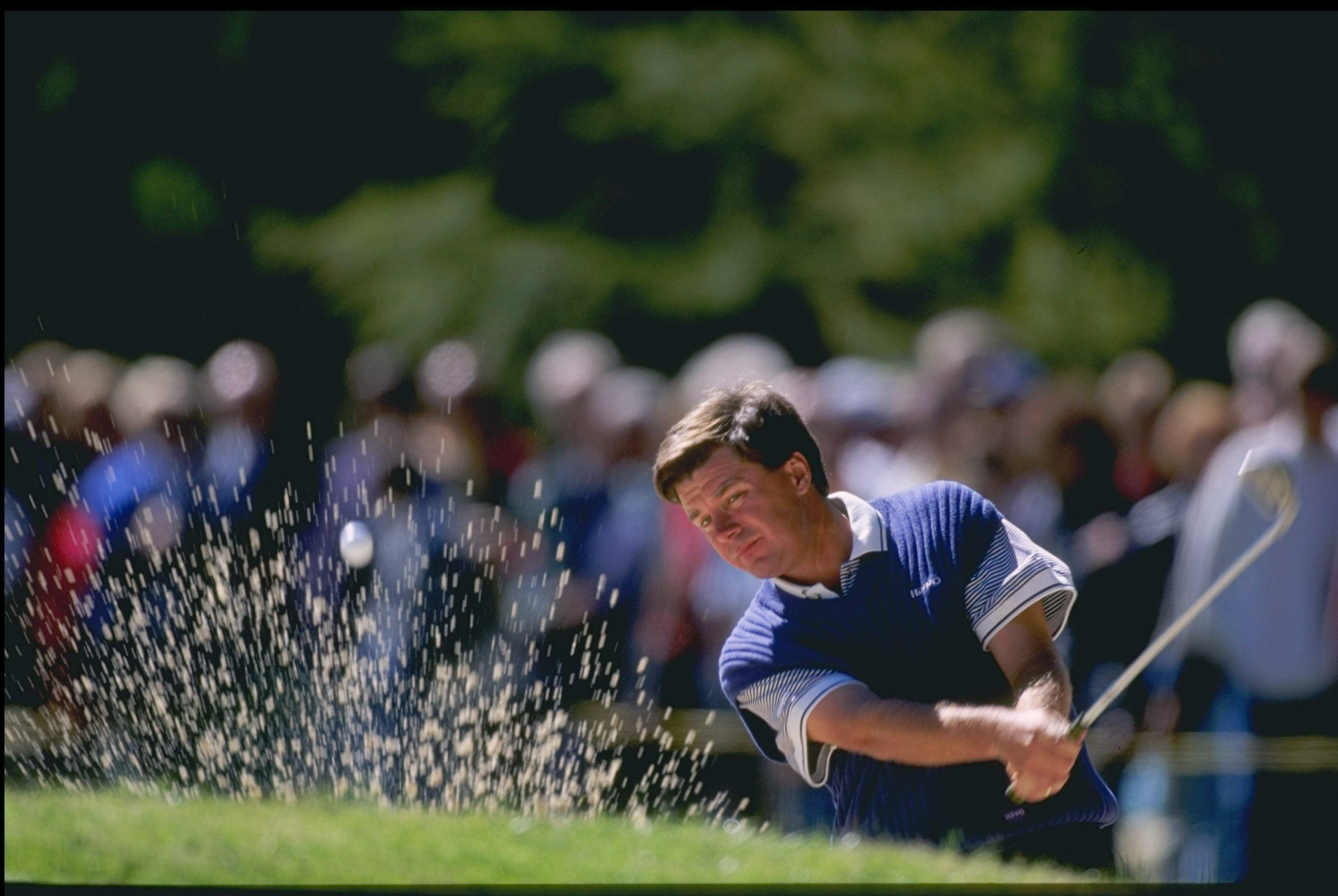
Paul Curry
But it was a round of 60 from England’s Paul Curry that grabbed the headlines. The 31-year-old had been struggling on tour after losing a substantial amount of money with the collapse of a golf course project he’d been involved in. After missing three straight cuts, he took a trip to Florida to visit coach David Leadbetter.
“He’s got me on the right track,” Curry said. “I lost a lot of money, although I’ve tried not to think about making big cheques…. But a hundred grand would be nice.”
Curry had a putt for eagle on the last to record the first 59 on the European Tour, but it narrowly missed. “After making an eagle on the (driveable) 14th, I realised 59 was on,” he said. “I got pretty nervous.”
Curry was 12 under through 36 holes, tied with Mark Brooks, who had fired a 63 on the Friday. Brooks had won twice on the PGA Tour in 1991 and he would go on to win the USPGA Championship of 1996. Monty and Langer were one back with Faldo and Woosnam lurking. O’Malley was seven behind and seemingly out of it.
Saturday witnessed tougher conditions and the scoring wasn’t so spectacular as a result. Brooks stumbled to a 73 and his race was run – he ended the tournament down in a tie for 28th. Curry also struggled, carding a 71 to fall off the pace set, once again, by Langer. With a second-straight 67 to follow his 62, the German led by three from Curry, Montgomerie and Lanner. Faldo was a shot further back tied with O’Malley, who had played himself back into contention with a best-of-day 65. Still, though, the Australian’s name was mentioned only as an afterthought in reports of the day that focused on a likely Sunday showdown between Montgomerie, Faldo and Langer.
Home favourite
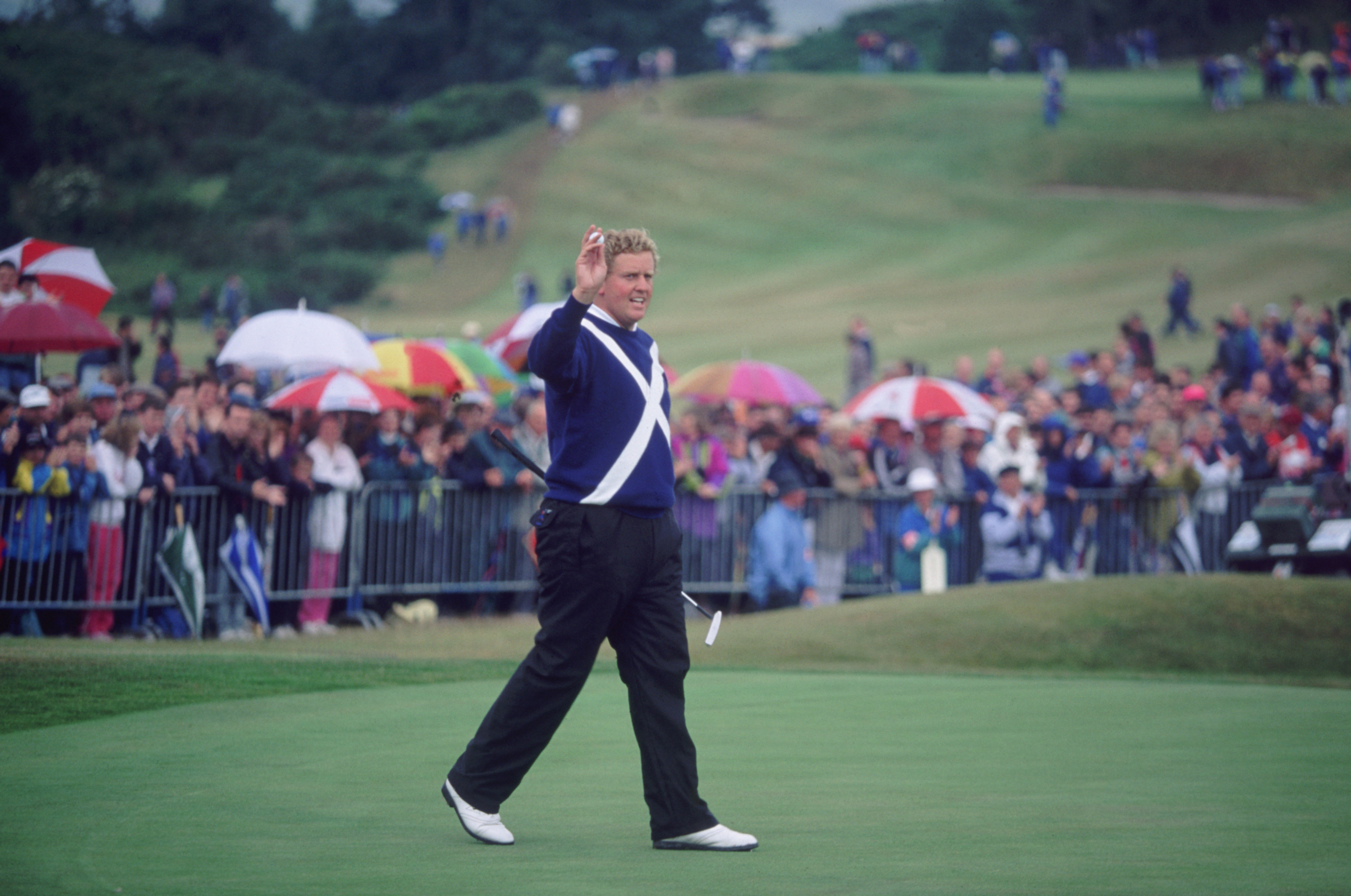
Monty
Sporting a sweater emblazoned with a saltire, Monty had the total support of the crowds on Sunday and he took the lead with birdies at the 11th and 12th. O’Malley couldn’t get it going on the front nine and, by the time he reached the 14th tee, he was just one under for the day and well adrift of the leaders (Faldo and Monty). Pom would later admit that his goal at that stage was to try and secure one of the five qualifying spots for Muirfield. But then things got a little crazy.
The pin at the 300-yard 14th was at the back of the green and Pom watched as playing partner Faldo came up short of the putting surface, in sand. The Australian was a longer hitter than the Englishman, though, and he knew he could get there. He unleashed a piercing drive that found the putting surface and ended 20 feet from the cup. As mentioned, O’Malley wasn’t the greatest putter, so chances were his mighty blow would lead to an easy, tap-in birdie. But this time the flat-stick behaved and, partially thanks to a good read from Faldo, Pom rolled it home for an eagle, eliciting a tremendous roar from the huge gallery.
An Incredible Finish
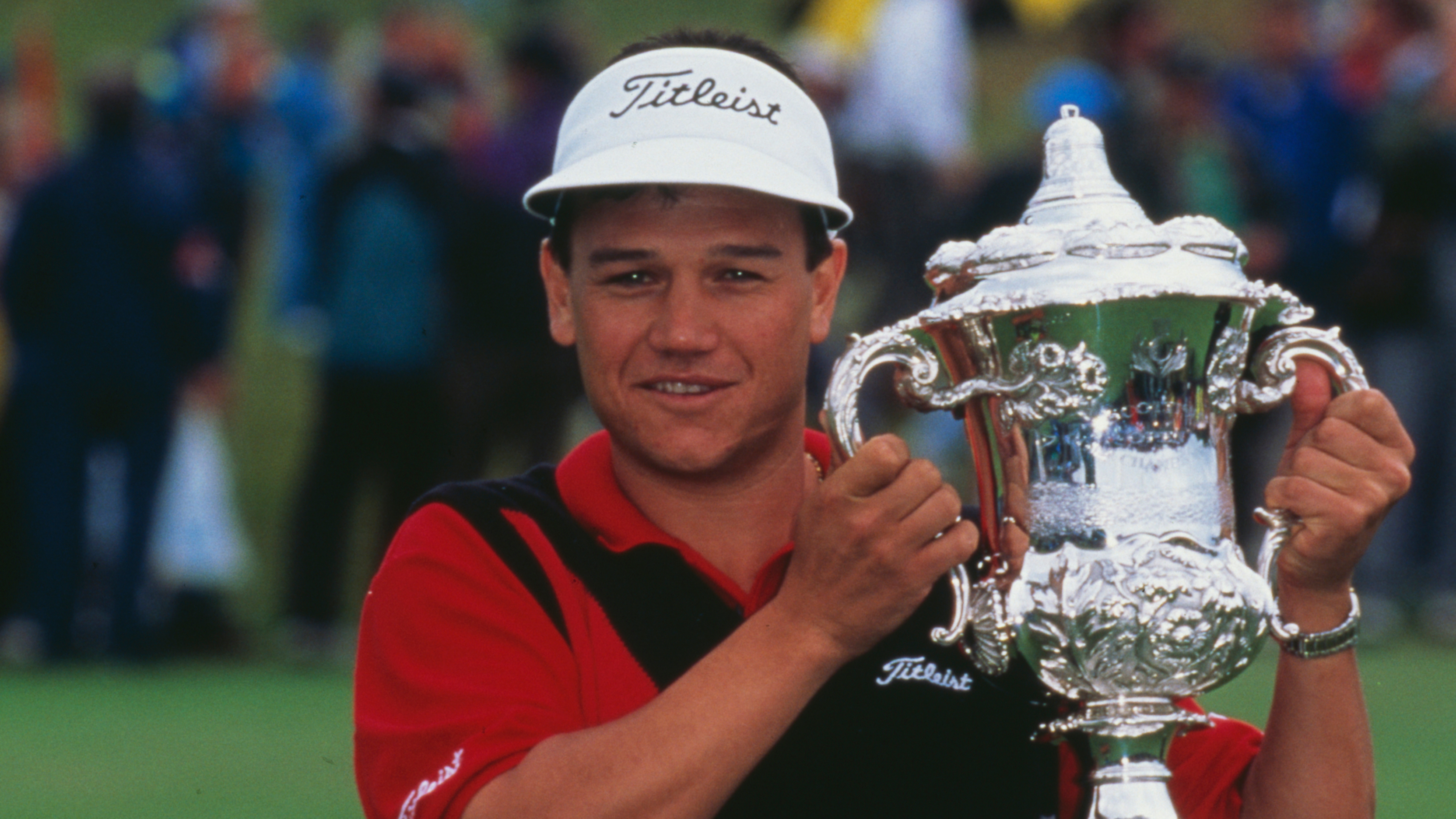
O'Malley with the trophy
On the 15th it looked as though the excitement had got to the Australian as he sprayed his drive miles to the right. It appeared to be in trouble, but in fact was so wayward that it ended on the spectator walkway in a good lie. It was a big break and O’Malley took full advantage. He fired his approach to 20 feet and, once again, the putt fell in, this time for a birdie. On the par-3 16th he holed from 12 feet for a two and then, after a fine approach to the difficult 17th, he knocked it in for another birdie.
By this point, word of O’Malley’s exploits had spread. He was five under for his last four holes, and many of those watching were unsure whether to marvel at this run or to bite their fingernails at the possible threat to their man Monty. The Scot was playing great golf himself in the group behind Pom and Faldo.
Standing on the 18th tee, O’Malley was level with Montgomerie on 16-under-par and one ahead of Faldo and McNulty, who had closed with a 63.
The Australian let rip off the tee on the par-5 finishing hole, his drive carrying over the saddle and chasing down to within 200 yards of the green. Faldo couldn’t make the carry and found sand.
It was in O’Malley’s hands. He played an excellent 6-iron to within 25 feet of the hole, and the resulting putt slammed into the back of the cup and dropped as if it was destined to do so.
O’Malley had come home in 28 and completed his last five holes in seven-under-par: eagle, birdie, birdie, birdie, eagle. Faldo could do nothing and Monty needed to eagle the last to match the Australian. But the Scot had been blown out of the water. He could only par the closing hole and, despite playing the back nine in 32, he came up two shots shy. “I can’t complain,” Monty said. “O’Malley had a miracle finish.” He certainly had.
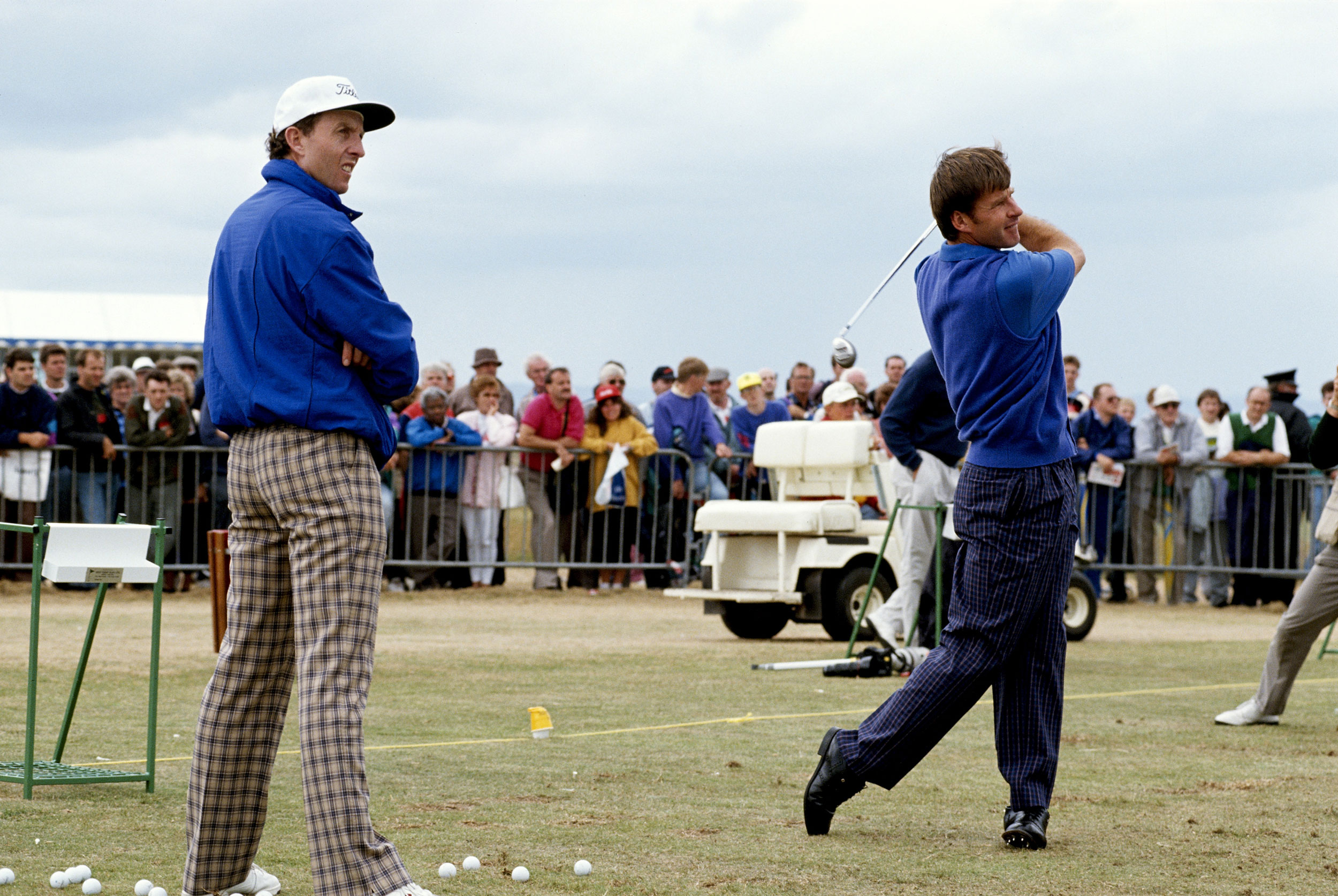
Faldo finished a shot further back in a tie for third place with McNulty. The Englishman may have been disappointed, but he would find solace the following week at Muirfield where he would claim golf’s biggest prize for a third time.
For O’Malley, the finish at Gleneagles was hard to believe.
“It hit me the next day,” he later said. “At the time I was just playing shots, but then I realised maybe I’d done something nobody else had ever done. I guess it’ll probably be the first lines of my obituary.”
There is no doubt it will read well. “Peter O’Malley, who famously defeated the European Tour’s best by playing the last five holes of the Scottish Open in seven-under-par…” Fairytale stuff!

Fergus is Golf Monthly's resident expert on the history of the game and has written extensively on that subject. He has also worked with Golf Monthly to produce a podcast series. Called 18 Majors: The Golf History Show it offers new and in-depth perspectives on some of the most important moments in golf's long history. You can find all the details about it here.
He is a golf obsessive and 1-handicapper. Growing up in the North East of Scotland, golf runs through his veins and his passion for the sport was bolstered during his time at St Andrews university studying history. He went on to earn a post graduate diploma from the London School of Journalism. Fergus has worked for Golf Monthly since 2004 and has written two books on the game; "Great Golf Debates" together with Jezz Ellwood of Golf Monthly and the history section of "The Ultimate Golf Book" together with Neil Tappin , also of Golf Monthly.
Fergus once shanked a ball from just over Granny Clark's Wynd on the 18th of the Old Course that struck the St Andrews Golf Club and rebounded into the Valley of Sin, from where he saved par. Who says there's no golfing god?